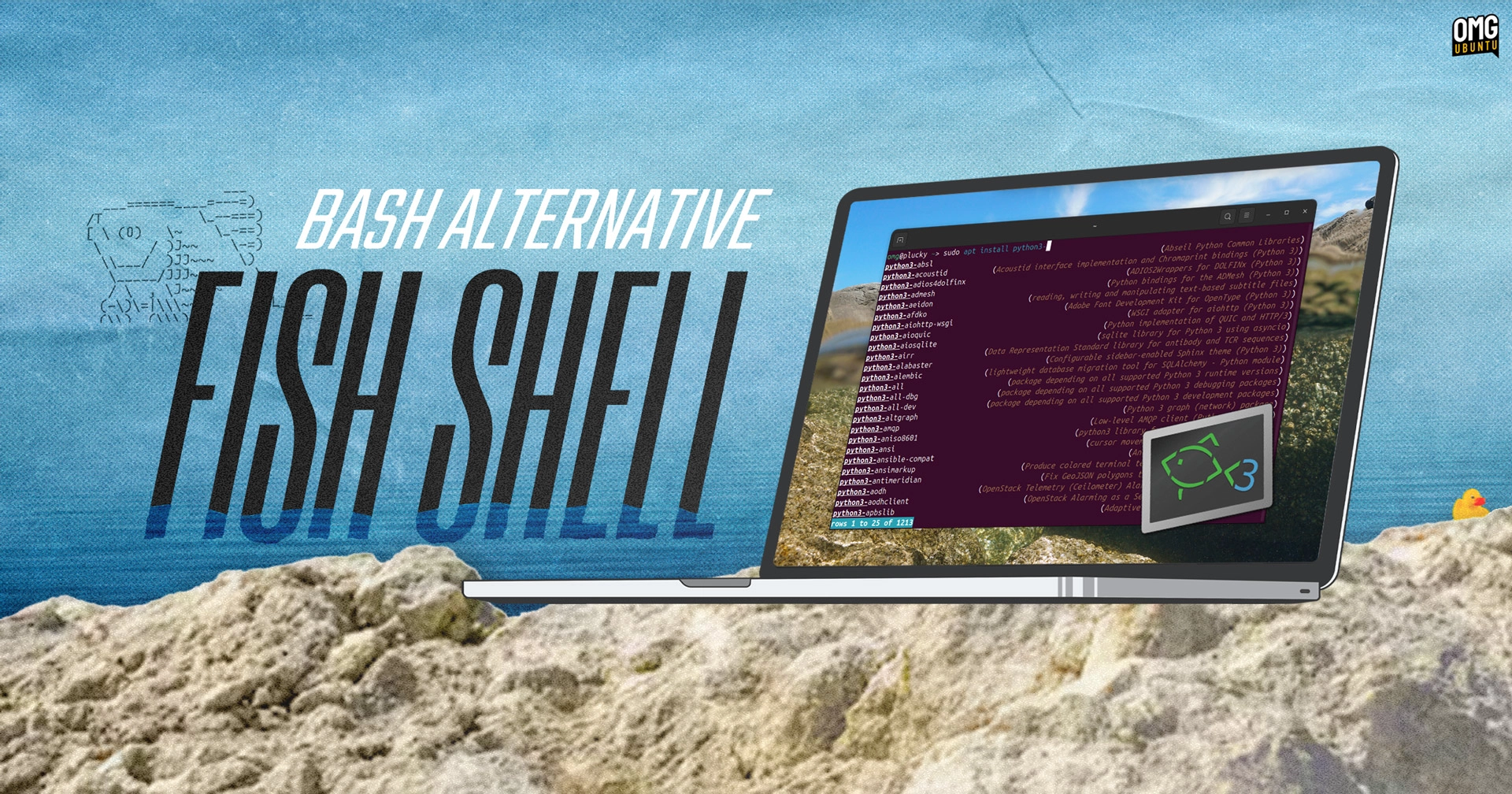Bash is the default shell in Ubuntu, which works well enough, but if you often find yourself using the terminal, experimenting with alternatives can be beneficial. One such alternative is Fish (Friendly Interactive Shell), designed to provide a more user-friendly command-line experience.
Fish stands out largely due to its functional features that turn the terminal into a less frustrating environment. It highlights syntax errors before you hit enter, suggests commands based on your history, and provides enhanced tab completion—features that are not available in Bash.
Features of Fish
-
Syntax Highlighting:Fish gives feedback by coloring commands as you type. Valid commands are highlighted in blue, while errors appear in red, making it easier to spot mistakes before execution.
-
Auto-suggestions:As you type, Fish suggests completions in grey based on your history. This is particularly useful for lengthy commands, allowing quicker access without having to scroll through previous entries.
-
Abbreviations:Users can create shortcuts that expand into longer commands, streamlining repetitive tasks considerably.
-
Advanced Tab Completion:Unlike Bash, Fish will display available options alongside brief descriptions when you use tab completion, making it easier to learn about different commands or packages without needing to consult help files.
-
Web-based Configuration:Fish includes a web configuration tool, offering a user-friendly environment to customize colors, functions, and history without the complexity of editing config files directly.
-
Customizable Prompt:Users can choose from presets or create personalized prompts for enhanced aesthetic appeal.
Beyond these features, Fish has alternative syntax for commands and variable definitions, diverging from Bash’s traditional conventions. This means it’s not entirely compatible with every Bash script, which could lead to issues if you’re relying on specific Bash syntax. However, switching back to Bash remains straightforward.
Installing Fish on Ubuntu
You can easily install Fish from Ubuntu’s repositories via:
sudo apt install fishFor the most up-to-date version, adding the official Fish PPA is recommended:
sudo apt-add-repository ppa:fish-shell/release-4sudo apt update && sudo apt install fishAfter installation, launch Fish by simply entering fish in your terminal. If you like it and wish to set it as your default shell, run:
chsh -s /usr/bin/fishThis requires a logout and login to take effect. Do be cautious with this command to avoid being temporarily locked out.
Conclusion
For users who only need a few basic commands, Bash is sufficient. However, if you spend considerable time in the terminal and wish to enhance your workflow, Fish can be a valuable upgrade. It simplifies everything from command input to error management, making it a superior choice for many power users.
